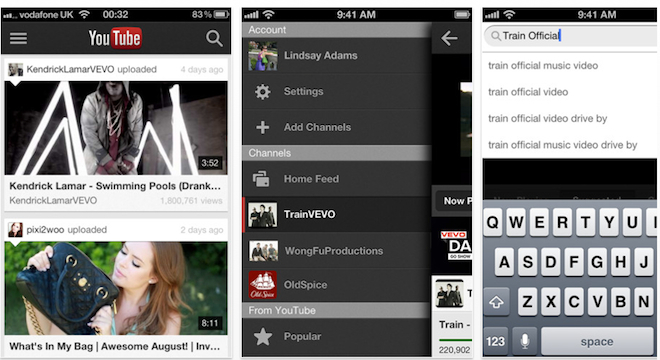Google and Apple’s mobile war escalated on Tuesday when Google launched a new standalone YouTube app for the iPhone and iPod Touch, a move that will allow Google to circumnavigate Apple’s decision to delete the default YouTube app from all Apple mobile devices going forward.
Apple has taken stronger steps over the past few months to box Google services out of the iPhone and iPad.
Apple’s new operating system for the devices, iOS 6, which is expected to be released Wednesday along with the unveiling of the new iPhone 5, eliminates not only YouTube, but Google Maps, replacing it with Apple’s own mapping software.
But where Apple went ahead and replaced Google Maps with mapping software of its own making, no such replacement video app is expected to fill the hole left by YouTube.
The old YouTube app for the iPhone, which has been pre-installed on every version of the device since the original launched in 2007, is anticipated to simply vanish once iPhone users download and install the new iOS 6 operating system, which Apple will encourage them to do.
Here’s a screenshot of the old and new YouTube iPhone app icons side by side:
Sources told TPM that Google had a 5-year-deal with Apple for a default YouTube app on Apple devices that has expired, and that both companies agreed not to renew it.
That’s why YouTube was in some sense forced to launch its own standalone version of the YouTube app for the iPhone and iPod Touch (Google said Tuesday an iPad version was in the works and was months away). Once iOS 6 is installed, users will have to navigate to the App Store and search for the YouTube app and proactively download it on their own, or visit YouTube’s mobile website, if they want to watch YouTube videos, a significantly greater barrier to viewing.
Still, Google attempted to spin the move as a positive, with Andrey Doronichev, head of YouTube’s mobile offerings, writing in an official company blog post on Tuesday that the new YouTube app is capable of “bringing you more of the videos you love and more ways to share them with the people you care about.”
Google will also heavily advertise the new app and its features in order to make iPhone users aware that they need to download it. When users visit the YouTube website from an iPhone or iPod Touch, for example, Google will begin showing an advertisement encouraging them to download the standalone YouTube App.
The new YouTube app for the iPhone and iPod Touch also closely resembles the default YouTube app found on most new Android smartphones, offering users the ability to swipe left and right to switch between different channels, share videos to Facebook and Google Plus, and comment while a video is playing.
But most of all, Google emphasizes that the new standalone YouTube will offer iPhone users “tens of thousands more videos,” than they can currently access through the default YouTube app.
That’s because Google is now able to show videos with ads in its new YouTube app, which it couldn’t previously do on the old default version. Some video creators only allow their YouTube videos to be played with ads in front of them, so that’s where all of the new videos are coming from.
As for an iPad version, or even one for Android tablets, Google declined to confirm anything beyond its official statement: “We’re working on an optimized version of the YouTube app for iPad in the coming months, and stay tuned for more details.”
But sources close to the situation told TPM that the tablet version would likely add more features found on the desktop website that aren’t available on the current mobile apps and versions of YouTube, such as the ability to watch multiple videos continuously using the YouTube playlist feature.
Google has been overt in its attempts to turn YouTube into a rival to broadcast TV in terms of viewers and advertising dollars, introducing new official channels with large news and entertainment brands over the past two years. Google hasn’t specifically said how much revenue YouTube makes from ad sales, but a Citi analyst recently projected the amount was up to $3.6 billion for 2012.
A new YouTube app, which Google has more control over, is likely to only help the company in its efforts to turn YouTube into a huge moneymaker and even larger audience magnet.






